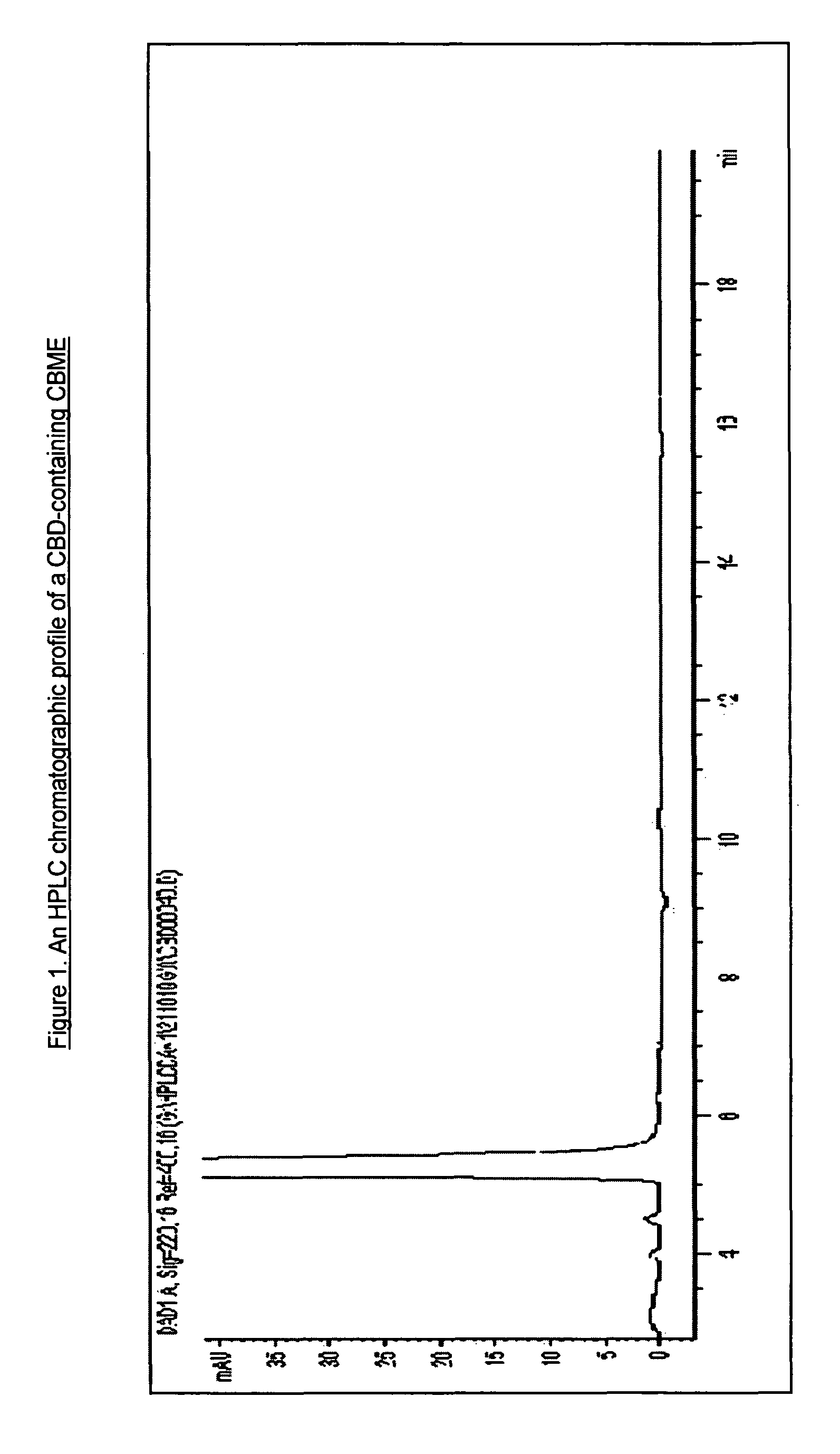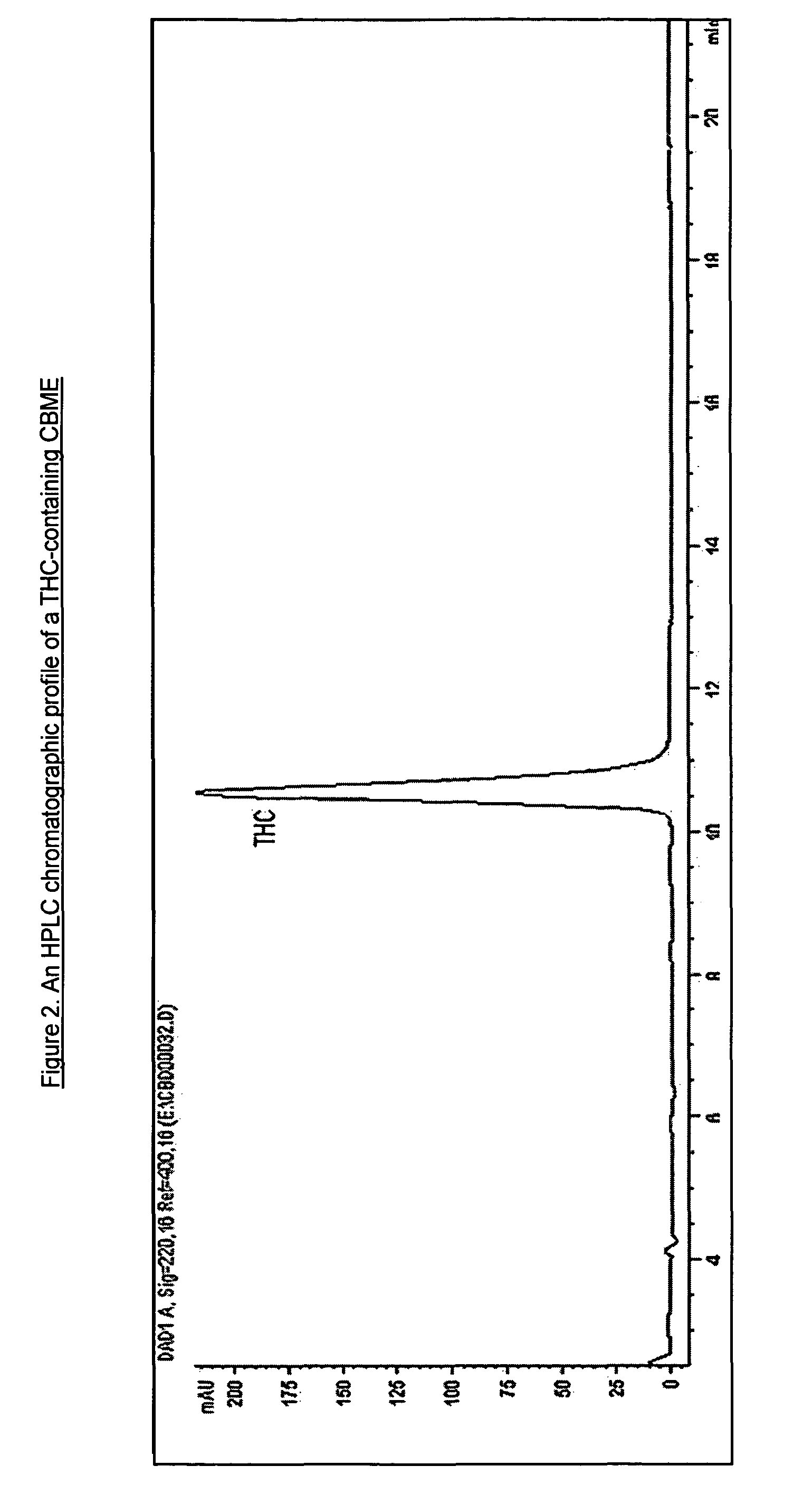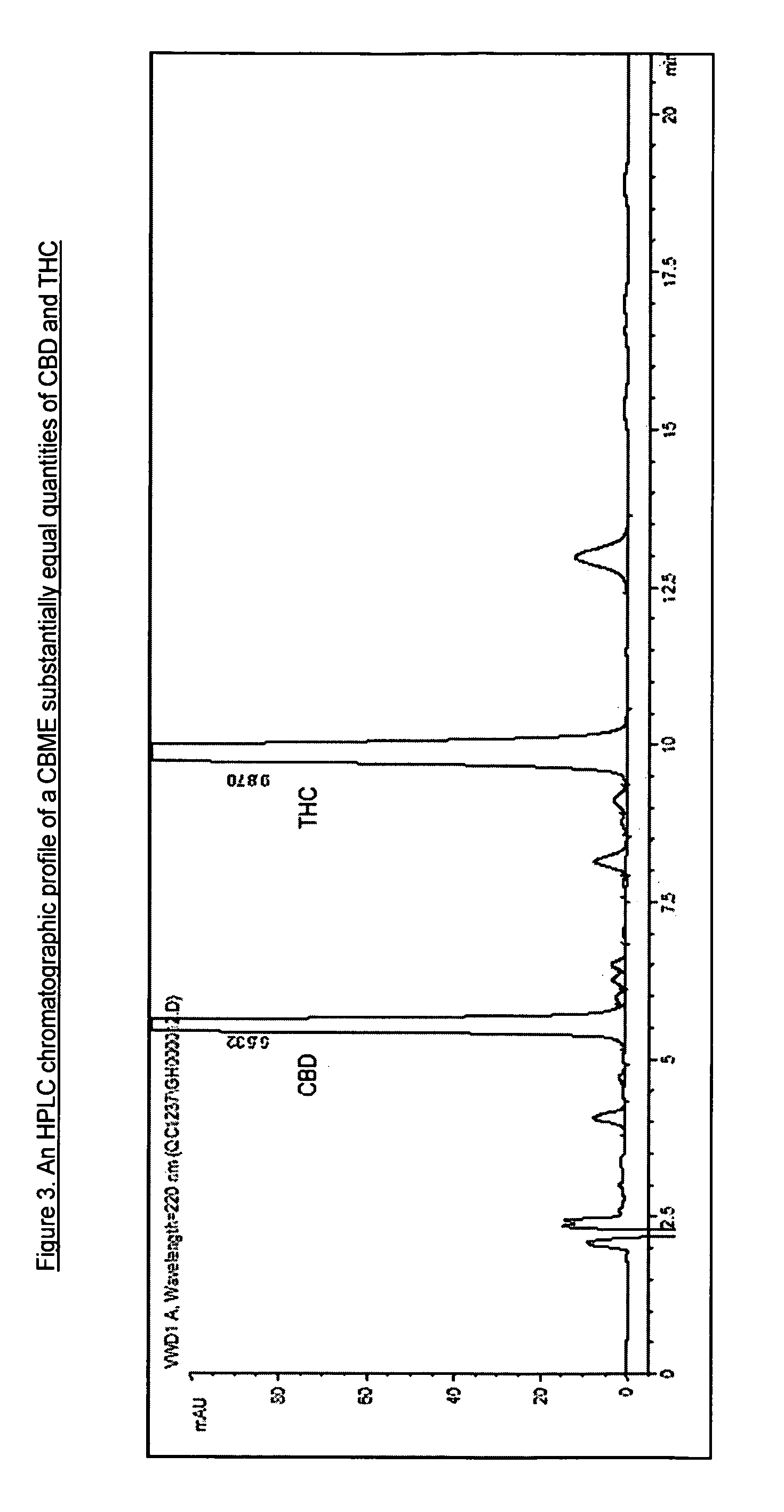Pharmaceutical compositions for the treatment of pain
a technology of pharmaceutical compositions and pain, applied in the direction of drug compositions, biocide, plant/algae/fungi/lichens ingredients, etc., can solve the problems of severe debilitating problems, pain and symptom control can often not be as effective as hoped, and affect the quality of life of patients, etc., to achieve effective treatment of pain
- Summary
- Abstract
- Description
- Claims
- Application Information
AI Technical Summary
Benefits of technology
Problems solved by technology
Method used
Image
Examples
example 1
Preparation of Cannabis Based Medicine Extracts (CBME)
[0062]Medicinal cannabis was produced and prepared with reference to the method disclosed in WO 02 / 064109 (Example 15). The resulting plant material was processed as described in the flow chart below. The process of manufacture of a High THC or High CBD cannabis based medicine extract is described.
[0063]
[0064]The resulting extract is referred to as a cannabis based medicinal drug extract and is also classified as a Botanical Drug Substance according to the US Food and Drug Administration Guidance for Industry Botanical Drug Products.
[0065]The quantity of cannabinoid in the CBME can be accurately assessed by way of measurement by HPLC with reference to the method disclosed in WO 02 / 064109 (Example 16).
[0066]An example of an HPLC chromatogram of a CBD-containing CBME produced using a high CBD medicinal cannabis plant extracted with CO2 is shown in FIG. 1. An example of an HPLC chromatogram of a THC-containing CBME produced using a ...
example 2
Assessment and Comparison of the Efficacy, Safety and Tolerabilty of Cannabis Based Medicine Extracts by Way of a Clinical Trial in Human Patients with Cancer Related Pain
[0067]A multi-centre, double blind, randomised, parallel group, placebo controlled, comparative study was undertaken in order to evaluate the efficacy, safety and tolerability of cannabis based medicine extracts (CBME) in patients with cancer related pain. The cannabis based medicine extracts contained either delta-9-tetrahydrocannabinol (THC) at a concentration of 27 mg / ml and cannabidiol (CBD) at a concentration of 25 mg / ml in ethanol:propylene glycol (50:50) excipient or delta-9-tetrahydrocannabinol (THC) at a concentration of 27 mg / ml in ethanol:propylene glycol (50:50) excipient. The CBME was presented in a pump action spray where each activation delivers 100 μl of spray, containing THC (2.7 mg) and CBD (2.5 mg).
[0068]The subjects in the study were randomised equally to either one of the cannabis based medicin...
PUM
| Property | Measurement | Unit |
|---|---|---|
| time | aaaaa | aaaaa |
| concentration | aaaaa | aaaaa |
| concentration | aaaaa | aaaaa |
Abstract
Description
Claims
Application Information
 Login to View More
Login to View More - R&D
- Intellectual Property
- Life Sciences
- Materials
- Tech Scout
- Unparalleled Data Quality
- Higher Quality Content
- 60% Fewer Hallucinations
Browse by: Latest US Patents, China's latest patents, Technical Efficacy Thesaurus, Application Domain, Technology Topic, Popular Technical Reports.
© 2025 PatSnap. All rights reserved.Legal|Privacy policy|Modern Slavery Act Transparency Statement|Sitemap|About US| Contact US: help@patsnap.com



